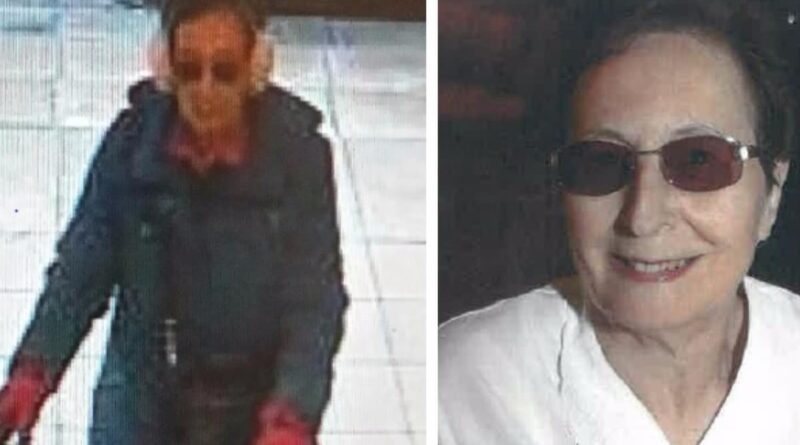Cathryn Holdsworth Disappears in Illingworth Halifax West Yorkshire United Kingdom
On the evening of Saturday, September 9, 2017, 72-year-old Cathryn Holdsworth vanished along a well-worn urban circuit that should have taken her from Halifax town centre back to her home in Illingworth, West Yorkshire. She was small—about five feet two—with very short speckled grey hair, and she moved deliberately, often with the support of a walking frame. She lived alone, managed multiple health conditions, and was known to keep to a routine. That is precisely why the break in this routine was so stark: after being captured on CCTV entering Tesco in the town centre and later seen on Market Street, Cathryn appears to have made her way home—yet from that point, the trail dissolves into troubling ambiguity.
Who Cathryn Was
Those who knew Cathryn describe a reserved but independent woman who navigated Halifax with the pragmatism of someone accustomed to doing things for herself. She relied on public transport, used her bus pass regularly, and kept medical appointments. Friends and neighbours knew her as predictable in the best sense: groceries on certain days, specific bus routes, a consistent cadence to her comings and goings. That predictability now serves as both a compass and a constraint for investigators—there is a narrow band of plausible options for where and how she could have disappeared.
The Final Verified Movements
The most authoritative point in the timeline is the CCTV image of Cathryn entering the Tesco in Halifax town centre on Saturday, September 9, 2017. Afterward, she is reported to have been seen on Market Street. Subsequent inquiry established that her bus pass was used for a journey consistent with returning to her home area in Illingworth. When police later examined her property, they found a set of personal effects that seemed to confirm she made it inside: her coat, ear muffs, and walking frame were located in the home. That last detail is among the most unsettling. If Cathryn depended on the frame for stability when outside, how did she leave again without it? And if she didn’t leave, what accounts for her absence?
The Day Before: An Earlier Sighting
The Friday preceding her disappearance—September 8—features in the record as well. Reports mention Cathryn at Calderdale Royal Hospital that day and suggest she may have boarded a bus towards Mixenden that evening. This Friday activity does not contradict the Tesco sighting on Saturday; rather, it contextualizes a routine in which hospital visits and bus travel were ordinary. The path from hospital to bus to home fits a familiar pattern—another reason the break in continuity after Saturday is so difficult to reconcile.
The Ten-Day Gap
Cathryn was reported missing on Tuesday, September 19, 2017—ten days after the last confirmed Tesco sighting. That gap is not a minor administrative quirk; it is a material obstacle. The first days in any missing-person case are crucial for securing time-sensitive evidence: bus- and street-level CCTV, recollections from drivers and regular riders, and perishable data points like shop camera loops and till logs. With a vulnerable adult who lives alone, silence can be mistaken for solitude. Only when neighbours noticed accumulating signs—a door that didn’t open, a pattern that failed to reappear—did the alarm fully sound. By then, the investigative field had widened, and key evidence may have already cycled out of retention systems.
Inside the Home: Clues and Constraints
Finding Cathryn’s coat, ear muffs, and walking frame inside her home is both a clue and a constraint. As a clue, it supports the hypothesis that she physically re-entered the property on September 9 after the town-centre outing. As a constraint, it narrows the set of plausible scenarios for a departure that followed: without her outdoor mobility aid, how far could she have gone, and by what means? If she left voluntarily, did she accept a lift or assistance? If something happened to her at or near the property, why are there no immediate signs that drew attention sooner? The items at home anchor the case to a precise, perplexing fulcrum: evidence of return, but no evidence of continued life-as-usual.
Transit, CCTV, and the Limits of Coverage
Public transport is often the backbone of a traceable route in urban missing-person cases, yet here the utility of bus-system CCTV appears to have been limited. While fare or pass data can suggest boarding events, video retention policies and camera angles can frustrate attempts to confirm alighting points and onward direction. The Halifax town centre and the corridors up to Illingworth and Mixenden feature a mix of municipal, commercial, and private cameras, each with its own storage window. A ten-day delay sharply reduces the availability of that video lattice. Even when imagery exists, clarity can be insufficient to definitively confirm identity in low light or crowded frames, especially for a petite person wearing seasonally common clothing.
Health, Vulnerability, and Risk Windows
Cathryn had health conditions and took regular medication, which increases risk if doses are missed. That vulnerability changes the calculus of investigative urgency: a person with medical dependence may deteriorate quickly without support, turning even short absences into emergencies. The health profile also shapes the scenario space. Wandering due to confusion, a medical event while outside, or a collapse within the home all become plausible. But the walking-frame detail pushes and pulls against these: if a medical emergency occurred inside, why was it not discovered sooner; if outside, how did she travel without the frame; and if assisted, by whom?
Geographic Pivots: Halifax, Illingworth, Mixenden, and Beyond
Four place names recur: Halifax town centre, Illingworth (home area), Mixenden (bus direction from the previous day), and, more distantly, Blackpool, Cornwall, and Brighouse (places with historical ties, including property links). The first three form a tight geographic braid that can be walked, bused, and surveilled. The latter set expands the search psychologically more than operationally; they are nodes of history that might prompt appeals in those areas but are not, on the face of the timeline, immediate waypoints in the September 9 movements. If Cathryn did return home and then left again, the most probable sphere remains local—unless an intervening person or vehicle altered her radius.
Community Response and Parliamentary Attention
The case did not fade into private grief. It drew persistent local appeals and, years later, formal attention in Parliament from the constituency’s Member of Parliament, underscoring both the human stakes and the policy questions around adult-missing protocols, data retention, and inter-agency coordination. Community members—neighbours, shopkeepers, and bus drivers—were urged then and have been urged since to revisit their memories of the weekend of September 9–10, 2017. Small details matter in such cases: a helpful stranger, an unusual stop, a lift offered, or a conversation overheard can break stalemates that forensic tools cannot.
Reasoned Scenarios (Without Accusation)
It is useful—carefully and without speculation that accuses—to map the main scenario families:
- Unwitnessed medical crisis at home. This aligns with the belongings found inside and her health profile. It relies on the possibility that the crisis occurred in a less-frequented part of the property or left minimal outward signs.
- Medical crisis or disorientation outside, close to home. This fights the walking-frame constraint but remains possible if she ventured out without it for a short distance or with informal assistance.
- Third-party contact after return. A neighbour, passer-by, acquaintance, or Good Samaritan could have interacted with her—helpfully or otherwise—altering her trajectory beyond predictable routes.
- Transit-related gap. A data-retention lapse may hide a decisive fragment: where she alighted, whether she transferred, or if she boarded a vehicle not instrumented by public CCTV.
None of these scenarios is proven; each fits some facts and strains others. The case persists because every path through the evidence meets a difficult bend—chiefly the walking frame being left behind.
Why This Case Is So Difficult
Cathryn’s disappearance sits at the intersection of three complicating factors. First, the timing: a weekend leading into a ten-day reporting gap that likely erased crucial CCTV. Second, the mobility profile: the walking frame suggests limited range without assistance, yet the lack of that frame within any subsequent sightings contradicts a simple “walked away” theory. Third, the domestic clue: items found inside are consistent with a return home but do not, on their own, dictate what happened next. Each factor narrows possibilities while leaving just enough space for uncertainty to persist.
The Continuing Imperative
Years later, the imperative remains to surface any overlooked memory from September 2017 in Halifax—particularly around the Tesco in town centre, Market Street, the bus corridors to Illingworth and Mixenden, and the immediate environs of Cathryn’s home. Even minor recollections—someone helping a small elderly woman to a car, a neighbourly knock, a taxi pickup, or a short errand without the frame—could re-open investigative avenues. When routines break, the truth often hides in the ordinary: the brief assist, the habitual kindness, or the forgettable errand that only becomes remarkable in hindsight.
A Life Interrupted
At its core, this is the story of a life interrupted in the spaces between everyday places: a supermarket entrance, a bus seat, a front door. For a woman known by her neighbours and guided by routine, those spaces should have been safe. The absence they now contain is a standing question to Halifax: what happened to Cathryn Holdsworth after September 9, 2017, and who can help close the last few inches between what we know and what we need to find out?
Discover more from City Towner
Subscribe to get the latest posts sent to your email.




